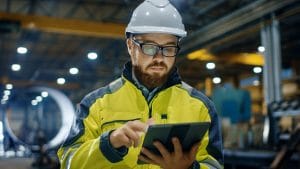Technology Aims to Protect Lone Workers

The pressing question, however, is whether we can use the same technology to monitor worker health and safety that we use to check on the content of our fridges. As it turns out, there are a number of companies doing exactly that, especially for employees who operate away from their employers.
GUARDING THE LONE WORKER
Around 15 percent of workers in the United States, Canada, and Europe perform their duties alone. As covered by Tech HQ, a number of devices in the Internet of Things (IoT) are being developed that can help keep that workforce safe and connected to assistance.
One option is called Wearsafe. This system is a wearable tag that includes a button which can be pressed discreetly when a worker feels their situation is growing hazardous. This instantly sends an alert that includes audio as well as a group chat function and tracks the wearer’s location.
Orange, a telecom company, is looking at software instead of hardware. The goal is a suite of mobile apps available for the smartphones many workers are already carrying. These could fill a wide range of health, safety, and communication needs without adding extra devices to the worker’s load.
WHAT DO WE DO WITH IT?
The technology to track worker safety and health, as well as communicate location and potential dangers, largely exists. The main issue at hand is application. With predictions that lone workers using such systems could reach 2 million in North America and Europe as soon as 2020, we need to get this right. Using IoT devices to monitor working conditions in manufacturing contexts has shown promise in detecting possible dangers before they become an active threat, giving employers the opportunity to make necessary repairs without any injuries. In dangerous environments, like many construction sites, wearable devices are being rolled out that can monitor a worker’s body temperature, level of fatigue, and other factors that would increase the chances of accidental injury if left unaddressed.
While questions of privacy will likely need to be addressed, the proper application of IoT devices can do wonders for employee health and safety. We are encouraged by this line of research and look forward to the day when employees can perform their duties comfortable in the knowledge that they are safe and environmental dangers are being addressed.
Until that day, however, we will continue to fight for the rights of those suffering work injuries due to accidents or employer negligence. Contact us today so we can discuss the best plan for your case.










